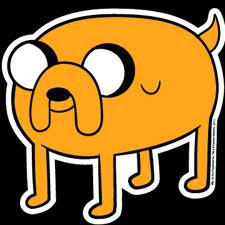Marceline Abadeer
Marceline is over a thousand years old, as she said in "
Evicted!" and "
Daddy's Little Monster." In "
Memory of a Memory,"
one of Marceline's memories shows her as a young girl playing near the
burning ruins of a city, presumably the aftermath of the
Mushroom War. It is later found out in "
I Remember You" that the
Ice King gave her
Hambo during the war. It is revealed in "
Finn the Human"
that Marceline already knew the Ice King by the end of the war,
confirming that the events shown in "I Remember You" happened during the
war, not after. It has yet to be explained how Marceline returned to
her family. It is revealed in "Finn the Human" that Marceline was still
traveling with the Ice King as the events in that alternate universe
cause the Ice King to die and she chooses to guard his body.
When Marceline was a teenager,
her father
ate her fries in the ruins of a diner, as Finn witnessed in her memory.
This incident damages Marceline's relationship with her father, which
she later sings about in her "
Fry Song." At a later point in her history, the first memory where she is chronologically seen as a vampire, she moved into the
Tree Fort (that would later become Finn and Jake's home) with her boyfriend
Ash. She would later dump him for selling her prized possession
Hambo, a raggedy teddy bear that she carried close to her throughout the years of her life that the
Ice King was shown in "
I Remember You" giving her Hambo when she was young. Marceline has also mentioned her
mother, but no in depth information has been given about her or their relationship yet.
In "Evicted!" Marceline says that she had been traveling all over the
Land of Ooo, and claims that she has done such adventures as riding
Giant Goldfish and traveling to the
Fire Kingdom. She has also in the past apparently gained several places of residence.
It's unknown exactly when or how Marceline became a vampire,
although she did not have a bite mark on her neck when she was younger.
As revealed by her alternate version in
Farmworld,
Marceline does consider herself half-demon, which may be a major
contribution to her longevity. However, this side doesn't give her any
magical powers or abilities such as flight and transformation as well as
a similar eternal youth to her father, which she appears to have gained
due to her vampire powers.
from adventuretime.wika.com
















